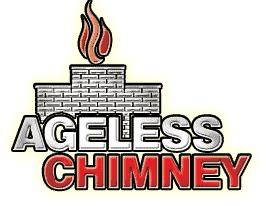Fireplace Cleaning in Little Germany, NY
What our clients say




Read About Us
Browse Fireplace Services
contact us
Professional Fireplace Cleaning in Little Germany, NY

Why Fireplace Cleaning is Important
Fireplace cleaning is essential for safety and efficiency, as it prevents the accumulation of creosote, a highly flammable substance known to cause chimney fires. In Little Germany, NY, experts advise scheduling fireplace cleanings at least once a year to mitigate such risks.
Ageless Chimney stands out as a specialized provider of thorough fireplace cleaning services, dedicated to ensuring the safety and functionality of your hearth. Their meticulous approach removes soot and debris, reducing the potential for hazardous buildup. By entrusting Ageless Chimney with your fireplace maintenance needs, you invest in the safety and longevity of your home’s heating system.
Experienced Technicians
At Ageless Chimney, we take pride in our team of highly experienced technicians who bring years of expertise to every fireplace cleaning service.
Local Expertise
As a trusted provider serving the New York City area, we have developed a deep understanding of the unique needs and challenges faced by homeowners in Little Germany, NY.
Customer Satisfaction
At Ageless Chimney, your safety and satisfaction are our top priorities. We are committed to providing you with a seamless and stress-free experience from start to finish.

Our Comprehensive Cleaning Process
At Ageless Chimney, we pride ourselves on providing a thorough and detailed fireplace cleaning process. Our trained technicians begin with a comprehensive inspection of your fireplace and chimney. This step is essential to identify any potential issues, such as cracks, blockages, or excessive creosote buildup. Early detection of these problems can prevent costly repairs and ensure your fireplace operates safely.
Once the inspection is complete, our team proceeds with the cleaning process. We use specialized tools to remove soot, creosote, and any other debris that has accumulated inside the chimney and fireplace. This not only enhances the efficiency of your fireplace but also significantly reduces the risk of chimney fires, ensuring your home remains safe and warm. Our methods are in line with industry standards, guaranteeing a high level of cleanliness and safety.
We understand that each home in New York City has unique needs. That’s why we tailor our services to meet the specific requirements of homes in Little Germany, NY. Whether you use your fireplace frequently or only occasionally, our cleaning process is designed to keep it in peak condition. Trust Ageless Chimney to deliver exceptional service and maintain the safety and efficiency of your fireplace.

Benefits of Regular Fireplace Maintenance
Regular fireplace maintenance by Ageless Chimney offers a multitude of benefits that extend beyond mere cleanliness. One of the primary advantages is enhanced safety. By removing creosote, a highly flammable byproduct of burning wood, we significantly reduce the risk of chimney fires. This safety measure is crucial for any homeowner in Little Germany, NY, especially those who frequently use their fireplaces.
Efficiency is another critical benefit of regular maintenance. A clean fireplace operates more efficiently, providing better heat output with less fuel. This efficiency translates into lower energy costs and a more comfortable home environment. When your fireplace is free from soot and debris, it can burn wood more completely, producing more heat and less smoke. This improved performance is particularly beneficial during the colder months in New York City.
Regular cleaning also has positive effects on indoor air quality. Soot and creosote can release harmful particles into the air, which can be detrimental to your health. By ensuring your fireplace is properly cleaned, Ageless Chimney helps maintain a healthier living environment for you and your family. Contact us at 516-795-1313 to learn more about how our services can benefit your home in Little Germany, NY.
Have a question?
Little Germany, known in German as Kleindeutschland and Deutschländle and called Dutchtown by contemporary non-Germans, was a German immigrant neighborhood on the Lower East Side and East Village neighborhoods of Manhattan in New York City. The demography of the neighborhood began to change in the late 19th century, as non-German immigrants settled in the area. A steady decline of Germans among the population was accelerated in 1904, when the General Slocum disaster decimated the social core of the population with the loss of more than 1,000 lives.
Local Resources
Useful links for Little Germany, NY
- Open a Little Germany, NY map
- Find the Little Germany, NY United States Post Office
- Locate nearby Little Germany, NY pharmacies
- View the current Little Germany, NY weather report
- Browse a list of Little Germany, NY public and private schools
- Little Germany, NY is located in New York county in New York State
